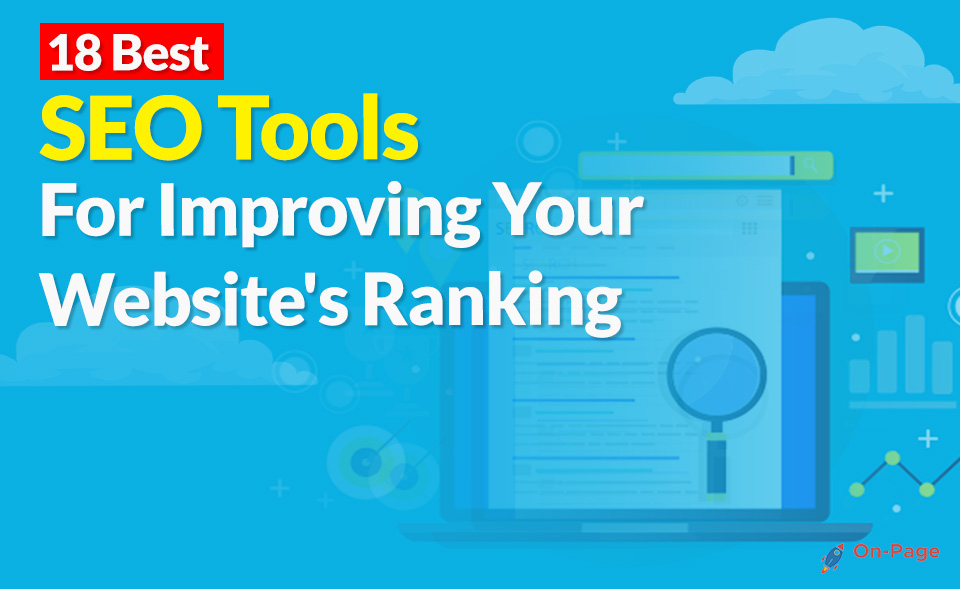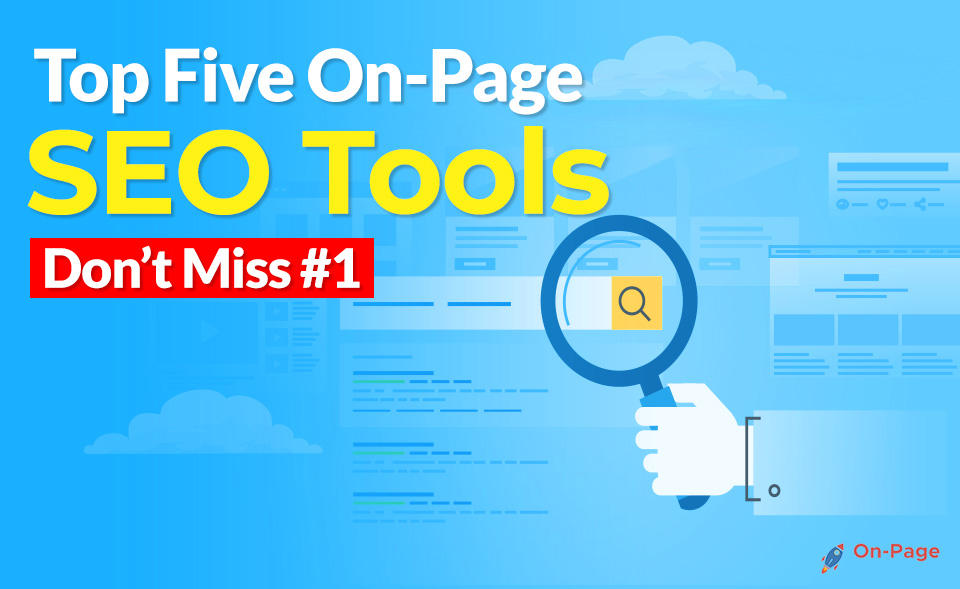A keyword finder tool serves as your savvy guide through the dense forest known as SEO. With it, you’ll not only glean insights into search volumes and competition levels, but also uncover related terms that could provide undiscovered opportunities in your content creation. Consider this tool as your companion, tirelessly scouring vast search engine databases to deliver valuable keyword data at your fingertips. Now, imagine harnessing this treasure trove of information to craft compelling, optimised content that draws your audience in like bees to a blossoming flower. It’s all about initiating that first step into the realm of keyword discovery.
KeywordFinder, available on On-Page.ai, is an essential tool for SEO success. It provides a comprehensive database of relevant keywords along with their search volume, competition level, and potential impact on the website’s ranking. By using KeywordFinder, users can identify high-performing keywords to drive targeted organic traffic to their websites and improve their search engine rankings.
How a Keyword Finder Tool Functions
A Keyword Finder Tool is like a treasure map leading you to the buried gold of online visibility. When you want your website to rank higher on search engines, the right keywords are key—no pun intended. So, what exactly does a keyword finder tool do? Let’s find out.
First, the tool scours its way through search engines and databases, collecting precious data about specific keywords. It mines for information on search volume, competition levels, and related terms. This data is pure gold for understanding which keywords will unlock the most success for your website.
For example, if you’re looking to write an article about plant care, you might want to know how many people search for “organic fertilizer” each month and how hard it is to get your article seen against competing websites. That’s where the keyword finder tool comes in handy.
When users input their desired keyword, the tool works its magic and generates a list of related terms along with vital information like search volumes and competition levels. This allows users to understand the relevance of specific keywords and how often they are searched, empowering them to make informed decisions about SEO strategies and content creation.
This information is valuable. It’s like having a crystal ball that shows you what words people are using the most often when they’re searching for something related to your site. Armed with this knowledge, you can craft your content using these top keywords and phrases, making it more likely that potential visitors will find and click on your site.
In short, a keyword finder tool functions as a powerful ally in navigating the complex world of SEO, guiding users toward the right keywords that will significantly boost their online presence.
Remember, choosing the right keywords doesn’t just mean picking super popular ones—sometimes those are really competitive. It’s also about finding that sweet spot where there’s good search volume but not too much competition. That’s where a great keyword tool becomes your best friend.
Now that we understand how a keyword finder tool functions in optimizing online visibility, let’s explore hands-on strategies for leveraging this powerful tool to enhance your website’s SEO performance.
Utilizing Keyword Finder for SEO
When you have a keyword finder tool at your disposal, it’s like having a treasure map for the digital world. You can use it to uncover valuable “gold mines” of keywords that can elevate your website’s visibility and draw in more visitors. So, how exactly can you make the most of this powerful tool? Let’s explore some essential steps for getting the best SEO results.
Identifying Target Keywords
First things first, you’ll want to identify the specific keywords that resonate with your target audience. This means understanding what they are searching for and addressing their needs. By leveraging the keyword finder tool, you can discover relevant and high-value keywords that align with your business or content. Think of it as finding the secret code that unlocks the gate to potential customers who are actively seeking what you have to offer.
The key here is to think from the perspective of your audience – put yourself in their shoes and consider what you would type into a search engine if you were looking for products or information in your industry. Once you have these keywords in your possession, you have a powerful tool at your disposal for connecting with your target audience.
Analyzing Search Volume
It’s not just about finding keywords – it’s also essential to understand the demand behind them. A keyword finder tool provides insights into the search volume for specific keywords, giving you a sense of how popular they are. This data allows you to prioritize the most sought-after keywords, helping you direct your efforts towards those that have the potential to generate more traffic and engagement.
For instance, if “best hiking trails” has significantly higher search volume than “top hiking paths”, it makes sense to focus your efforts on optimizing content around the former keyword due to its higher potential for reaching a wider audience.
Assessing Competition
In the world of SEO, competition is a critical consideration. A good keyword finder tool allows you to gauge the level of competition for each keyword. This insight enables you to develop effective strategies tailored to each keyword’s competitiveness. By analyzing this information, you can prioritize keywords where competition is manageable and strategize accordingly.
For example, if you’re running an online shoe store and find that “affordable running shoes” has lower competition compared to “best running shoes”, it presents an opportunity to target a potentially less crowded space and gain visibility.
Refining Strategy
Armed with valuable insights from the keyword finder, it’s time to refine your SEO strategy and content creation plan. These insights will guide you in creating content that resonates with both search engines and your audience, ultimately improving your website’s visibility and attracting more organic traffic.
Remember, it’s not just about stuffing keywords into your content haphazardly. It’s about understanding what potential customers are searching for, and then crafting valuable, informative content around those topics. This approach ensures that your content aligns with search intent while also addressing your audience’s needs.
By following these steps and utilizing a reliable keyword finder tool, you are positioning yourself to make informed decisions that will improve your website’s SEO performance. It’s all about finding those golden nuggets of information that help drive organic traffic and boost your digital presence.
With a foundation laid in understanding how keyword finder tools work to enhance SEO strategies, let’s embark on a journey into the realm of “Importance of Long-Tail Keywords”. This exploration promises indispensable wisdom for navigating the intricate landscape of keyword-driven digital visibility.
Importance of Long-Tail Keywords
Long-tail keywords are like magic spells for your website. When someone uses these special phrases to search, it means they know exactly what they want. Long-tail keywords work like a compass, guiding users who are looking for something very specific towards what you offer.
Imagine someone searching for “smartphones.” They might be just looking around or trying to learn about smartphones in general. Now, picture another person using the long-tail keyword “best budget Android phones.” This person knows exactly what they want—to buy an affordable Android smartphone. They are likely ready to make a purchase, and that’s exactly who you want visiting your website.
The power of long-tail keywords lies in their specificity:
- They capture searches with higher conversion potential.
- They target niche audiences with precise user intent.
A study by Moz found that long-tail keywords account for a substantial 70% of all web searches. That’s worth taking note of!
Consider this analogy: If the broad keyword “smartphones” is like going to a supermarket and browsing different aisles without a clear idea of what you need, then a long-tail keyword is akin to entering the store with a shopping list specifying “best budget Android phones.” You’re on a mission, and you know exactly what you want.
Capturing User Intent
People use all sorts of words when they’re looking for something online. Sometimes they even ask their devices directly using voice search. Long-tail keywords mimic these natural language queries quite well. Think about it – when people speak naturally, they tend to be more specific about what they’re asking for.
This is where long-tail keywords shine:
- They reflect user intent more accurately.
- They lead to higher engagement because they meet users at their exact points of interest.
For instance, instead of typing “restaurant” into a search engine, someone might say, “Where can I find the best Italian restaurant near me?” The long-tail keyword here is “best Italian restaurant near me,” capturing both the user’s craving for Italian cuisine and their location—all in one search.
It’s clear that long-tail keywords are essential for targeting users who are ready to take action and make a decision. By understanding these nuances in user behavior and leveraging long-tail keywords effectively, you can attract highly qualified traffic to your website and increase your chances of conversion.
As we’ve unraveled the importance and impact of long-tail keywords on SEO strategy, let’s now pivot our focus to seamlessly integrating these keyword gems into your website content strategy.
Integrating Keywords into Website Content
When it comes to website content, keywords act as the bridges connecting your information to the people searching for it. It’s not just about stuffing your content with keywords; it’s about placing them strategically in crucial areas to ensure your website performs well in search engine results.
Title Tags and Meta Descriptions
Title tags and meta descriptions are akin to the introduction of a book – they provide a sneak peek into what the page is all about. By optimizing these with relevant keywords, you’re essentially informing search engines and users about your page’s content. This is crucial for visibility and click-through rates. Imagine if your website was a library, and the title tags and meta descriptions were like the labels on the shelves, guiding people to the right books.
Remember, these tags aren’t just for search engines—they’re also your first impression on potential visitors. So, while using keywords is essential for ranking purposes, they should also be engaging and enticing for human readers.
Headings and Subheadings
Think of headings and subheadings as the chapter titles and subtitles in a book. They guide readers through the content and inform them about what to expect in each section. Incorporating keywords in these elements not only signals to search engines what your content is about, but also helps readers quickly grasp the key points within the text. Just like a well-organized book makes it easier for readers to find what they’re looking for, the strategic use of keywords in headings makes it easier for both users and search engines to understand your content.
Body Content
The body content is where you get to tell the story of your webpage—the meat of your message. While it’s important to incorporate keywords naturally throughout the body content, readability should never be sacrificed for keyword placement. Think of keywords as seasoning in a dish; too much can ruin it, but the right amount enhances the flavor. Balancing keyword integration with quality content is key.
Understanding how integrating keywords is critical to website performance sets the stage for our next exploration—implementing competitive keyword analysis into your SEO strategy.
Competitive Keyword Analysis
Understanding how your competitors use keywords can provide valuable insights into what’s working in your industry and guide your own SEO strategy.
Let’s start with identifying competitor keywords. This is where the real detective work begins. Utilize keyword finder tools to discover which keywords your competitors are targeting. By knowing which keywords they’re focusing on, you can evaluate if there are gaps in their strategy that you can capitalize on.
Next, we’ll delve into analyzing competitor strategies. It’s not just about the keywords they’re using, but also how and where they’re using them. Evaluating how competitors incorporate these keywords into their content and SEO efforts gives you a window into their tactics and can help you refine your own approach.
By gaining competitive insights, you leverage this data to refine your own keyword strategy and stay ahead in the search rankings. Learning from your competition allows you to adapt and innovate, ensuring you’re always one step ahead.
It’s not about copying what others are doing, but rather understanding their approach to inform and improve your own strategies.
For instance, if a competitor is ranking high for a specific keyword, examine their content to see how they’ve optimized it. Or if they’re missing out on certain long-tail keywords, it presents an opportunity for you to address those areas in your content and attract relevant traffic.
Keep in mind that competitive keyword analysis isn’t a one-time task—it’s an ongoing process that requires continuous monitoring and adjustment based on industry trends and changes in search engine algorithms.
Effectively identifying and analyzing competitor keywords, strategies, and insights equips you to elevate your SEO game and outmaneuver your competition in the digital arena.
Choosing the Right Keyword Tool for Your Needs
Selecting the right keyword tool is crucial for optimizing your SEO strategy. Just as a skilled artisan needs the right tools to carve out a masterpiece, digital marketers need a reliable keyword tool to sculpt a compelling online presence. When deciding on a keyword tool, carefully consider the following factors:
Data Accuracy
Data accuracy is paramount. You need a tool that provides precise and dependable data on search volumes and keyword competitiveness. After all, making strategic decisions based on faulty or outdated data can lead you down the wrong path. It’s like using an outdated map to navigate through a city – you’ll likely end up lost!
When examining the accuracy of a keyword tool, it’s essential to look at its track record and reputation. Tools with proven accuracy and reliability in their data can provide you with the confidence needed to make informed decisions.
User-Friendly Interface
Navigating through complex and confusing interfaces can be daunting and time-consuming. That’s why opting for a tool with an intuitive interface and easy navigation is crucial for efficient keyword research.
A user-friendly interface allows you to seamlessly explore different features without getting bogged down in unnecessary complexities. It’s like having clear signposts on a winding road—they guide you in the right direction, saving you time and frustration.
Additional Features
While accurate data and usability are crucial, additional features can elevate a keyword tool from good to great. Look for tools that offer features like competitor analysis, keyword trend tracking, and content optimization suggestions.
Competitor analysis provides valuable insights into your rivals’ strategies, helping you identify areas for improvement in your own approach.
Keyword trend tracking allows you to stay ahead of the curve by identifying emerging search trends early on.
Content optimization suggestions can help refine your content to align it closely with user intent, enhancing its appeal to search engines and users alike.
For instance, On-Page.ai not only offers accurate data on search volumes and competition but also provides an intuitive interface for effortless navigation. Additionally, it includes advanced features such as competitor analysis, keyword trend tracking, and content optimization suggestions—making it a comprehensive solution for all your SEO needs.
When selecting a keyword tool, keep these factors in mind to ensure you make an informed decision that aligns with your specific requirements and goals.
With these considerations in mind, finding the right keyword tool becomes an essential part of your SEO arsenal. Check out On-Page.ai for an all-in-one solution that simplifies keyword research, allowing you to focus on crafting remarkable content and driving organic traffic to your website.





